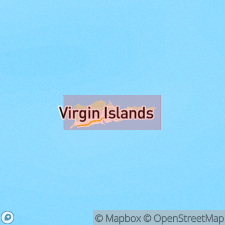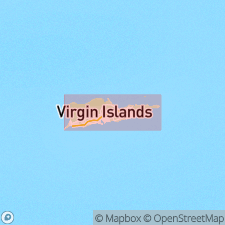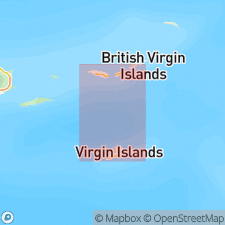
- Usage in publication:
-
- Allandale formation
- Modifications:
-
- Original reference
- Dominant lithology:
-
- Sandstone
- Mudstone
- AAPG geologic province:
-
- Caribbean region
Summary:
Pg. 604. Allandale formation. Tuffaceous sandstone and mudstone. Exposed thickness 2,000 feet. Underlies Cane Valley formation (new). Grades laterally into Caledonia formation (new). Age is Late Cretaceous.
Almost all accessible fresh exposures are on road leading west-northwest from Estate Allandale, on western part of St. Croix, Virgin Islands.
Source: US geologic names lexicon (USGS Bull. 1350, p. 15).

- Usage in publication:
-
- Allandale Formation
- Modifications:
-
- Original reference
- AAPG geologic province:
-
- Caribbean region
Summary:
Pg. 185 (fig. 3), 198-199, pl. 1. Allandale Formation of Mount Eagle Group. Exposed only on western half of [St. Croix] island because eastern half of island has been displaced south by normal faulting. Probably formation would be found south of eastern St. Croix beneath Judith Fancy Formation. Estimated thickness of 2,000 feet exposed over a 2.5 sq mi area in core of Brooks Hill anticline but base not exposed. Grades laterally into Caledonia Formation. Underlies Hope Member of Cane Valley Formation. Age is Late Cretaceous.
Almost all accessible fresh exposures are on road leading west-northwest from Estate Allandale, on western part of St. Croix, Virgin Islands.
Source: US geologic names lexicon (USGS Bull. 1350, p. 15).

- Usage in publication:
-
- Allandale Formation*
- Modifications:
-
- Overview
- AAPG geologic province:
-
- Caribbean region
Summary:
Allandale Formation shown in figure 4 as belonging to Mount Eagle Group and being of Late Cretaceous (Campanian) age. Approximately 610 m (2,000 feet) of Allandale is exposed on west half of St. Croix. Not present in eastern half because of southward displacement by normal faulting; presumably underlies Judith Fancy Formation.
Source: GNU records (USGS DDS-6; Reston GNULEX).

- Usage in publication:
-
- Allandale Formation*
- Modifications:
-
- Overview
Summary:
Author follows usage of Whetten (1966) for the geologic units on St. Croix, VI. They include (ascending) the Late Cretaceous Mount Eagle Group, which consists of the Caledonia Formation, Allandale Formation, Cane Valley Formation (and its East End Member), and Judith Fancy Formation; Late Cretaceous Southgate Diorite and Fountain Gabbro intrusions; and Tertiary Jealousy Formation (early Eocene to middle Miocene) and Kingshill Marl (late Miocene, based on Gill, 1990).
Source: GNU records (USGS DDS-6; Reston GNULEX).
For more information, please contact Nancy Stamm, Geologic Names Committee Secretary.
Asterisk (*) indicates published by U.S. Geological Survey authors.
"No current usage" (†) implies that a name has been abandoned or has fallen into disuse. Former usage and, if known, replacement name given in parentheses ( ).
Slash (/) indicates name conflicts with nomenclatural guidelines (CSN, 1933; ACSN, 1961, 1970; NACSN, 1983, 2005, 2021). May be explained within brackets ([ ]).

